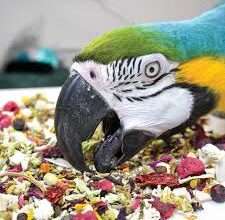
- by FPABS-Admin
- 0
- Posted on
Blue and yellow macaw
Macaws are large members of the parrot family found throughout Central and South America. Their bright colors and loud vocalizations are important tools for communication but also make them easy targets for poachers.
GENERAL INFORMATION
Like many parrots, macaws are long-live sometimes reaching ages of upwards of 50 years. More commonly they have a 30 to 45year lifespan. Blue-and yellow macaws are commonly found in the pet trade. Within the United States. Most parrots are bred for the pet trade however they do not make good pets for m
Macaws make a variety of vocalizations, including loud calls, squawks and screams which echo through the forest canopy. In the wild, these vocalizations help them mark their territory, identify one another, and communicate with their flock. Inside a house, they are loud, destructive, and require more attention than domestic animals like dogs or cats. They often bond with a single household member and may exhibit aggressive behaviors toward anyone else that approaches them.
Blue-and-yellow macaws are large parrots weighing about 2 pounds. They have a 3 to 4-foot wingspan and a 1 to2 foot-long tail that helps guide them as they soar through the air. Their upper bodies are blue, while their undersides are golden yellow. The long tail feathers are mainly blue and yellow. The chin and cheek area is pinkish-white with thin lines of black feathers. Coloration on juveniles is dull and becomes brighter with age. These macaws have a hooked beak which is grey-black in color. Like other parrots, blue-and-yellow macaws are zygodactyl – their dark grey feet have two toes pointing forward and two toes pointing backward, each with a black claw.
